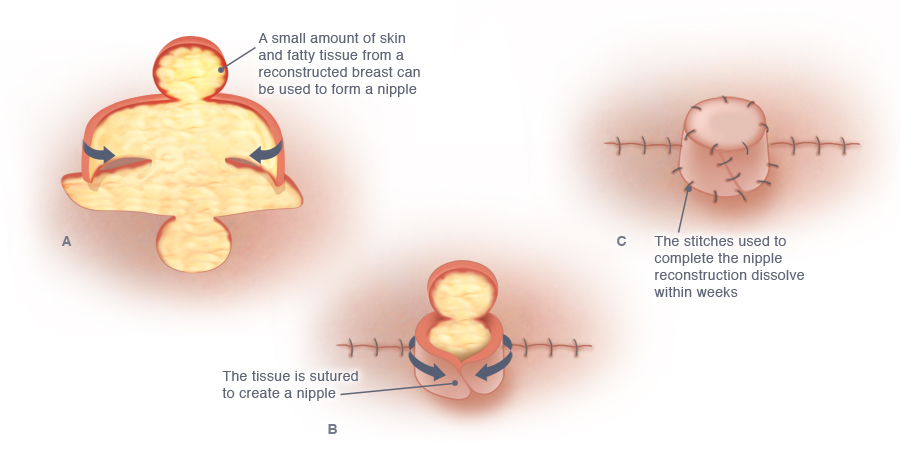Nipple Reconstruction
Nipple Reconstruction

There are a variety of methods for nipple reconstruction; one commonly utilized method of nipple reconstruction is illustrated here. (A) The skin and fat that will form the projected nipple are surgically raised. (B) The surgically elevated tissue is brought together to form a nipple, and all incisions are closed with dissolvable stitches. (C) The nipple reconstruction is completed. Once the reconstructed nipple is fully healed, tattooing can be used to shade the nipple and restore the appearance of the areola (not shown).

There are a variety of methods for nipple reconstruction; one commonly utilized method of nipple reconstruction is illustrated here. (A) The skin and fat that will form the projected nipple are surgically raised. (B) The surgically elevated tissue is brought together to form a nipple, and all incisions are closed with dissolvable stitches. (C) The nipple reconstruction is completed. Once the reconstructed nipple is fully healed, tattooing can be used to shade the nipple and restore the appearance of the areola (not shown).
Nipple reconstruction is usually performed as part of Stage II. Regardless of which method of breast reconstruction you chose, reconstruction of a nipple really makes a reconstructed breast look as normal and natural as possible. Because this minor procedure has a major impact on making a reconstructed breast look natural, most women choose the option of having nipples reconstructed.
A number of different techniques of nipple reconstruction can be used to reconstruct a nipple following natural tissue reconstruction. The best technique for you will depend on several factors such as the size of your breast, the shape of your breast, and the appearance of your other nipple if you have had only one breast reconstructed. Dr. Greenspun uses only your own tissue to provide projection to reconstructed nipples. At an outpatient visit about 6 to 8 weeks after surgery, the reconstructed nipple and the area around it are tattooed to fully restore the appearance of a normal nipple and areola.
Nipple Reconstruction in New York and Connecticut
Contact us if you would like more information about the options for nipple reconstruction after mastectomy or to schedule a consultation. Our practice has offices in New York City and Greenwich, Connecticut.

